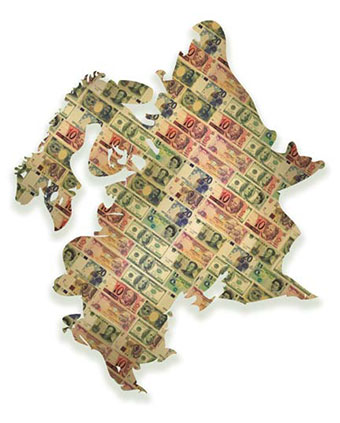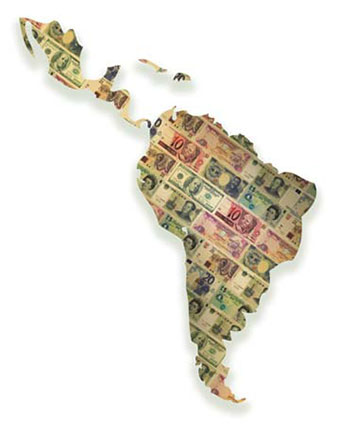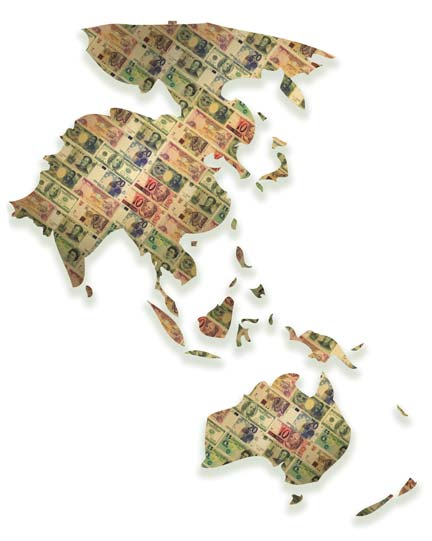Site Selection is pleased to present its fifth annual Best to Invest rankings of nations and metro areas for investment-attraction activity in 2012. The national Investment Promotion Agencies and metro areas recognized here were particularly successful in 2012 at attracting capital investment projects — both expansions of existing facilities and new projects — from investors at home and abroad.
The editors welcome the participation of: (1) Amsterdam-based FDI advisory Investment Consulting Associates (ICA) and its LocationSelector.com FDI software solution, a comprehensive suite of market analysis tools and research used by corporate executives and site location experts worldwide; and (2) IBM Global Business Services and Brussels-based IBM-Plant Location International, which tracks global flows of foreign direct investment and publishes an annual Global Location Trends report.
Methodology
Fifty percent of the national rankings were based on growth in new facilities, capital investment and job creation using data from Conway Data’s New Plant database and from IBM-PLI’s database of new projects for calendar years 2011 and 2012. Each country was ranked on the total number of projects, investment and jobs created both as raw value and as a per capita value.
The other 50 percent of the ranking was based on the Location Rank and Competitiveness Score resident in LocationSelector.com’s proprietary database using these factors: business costs, economic strength, infrastructure; regulatory burden; and tax rates.
Fifty percent of the metro rankings were based on growth in new facilities, capital investment and job creation using data from Conway Data’s New Plant database and from IBM-PLI’s database of new projects for calendar years 2011 and 2012.
The other 50 percent was based on the Location Rank and Competitiveness Score using LocationSelector.com’s proprietary database using these factors: economic strength and infrastructure (physical capital). Additional points were given to those metros that ranked among the top 25 metro destinations for Foreign Direct Investment Projects as identified in IBM’s Global Location Trends report.
Site Selection congratulates the countries, national investment promotion agencies and metros recognized here for their success in attracting foreign direct investment in a global economy that remains lukewarm.
Capital investors only invest where they are confident they will earn a meaningful return, and these locations deliver that confidence.
— Editor


Western Europe
Top Countries
- Ireland
IDA Ireland
www.idaireland.us/ - Germany
Germany Trade & Invest
www.gtai.com - France
Invest in France
www.invest-in-france.org - Finland
Invest in Finland
www.investinfinland.fi - Netherlands
Netherlands Foreign Investment Agency
www.nfia.nl/
Top Metros
- Frankfurt, Germany
- Paris, France
- Dublin, Ireland
- Madrid, Spain
- Barcelona, Spain
- Vienna, Austria
- London, UK
- Berlin, Germany
- Amsterdam, Netherlands
- Birmingham, UK

Eastern Europe
Top Countries
- Slovak Republic
Slovak Investment and Trade Development
www.sario.sk - Czech Republic
CzechInvest
www.czechinvest.org - Romania
Romania Trade and Invest
www.romtradeinvest.ro - Hungary
Hungarian Investment and Trade Agency
www.hita.hu - Poland
Invest in Poland
www.paiz.gov.pl
Top Metros
- St. Petersburg, Russia
- Moscow, Russia
- Istanbul, Turkey
- Bucharest, Romania
- Warsaw, Poland
- Vilnius, Lithuania
- Budapest, Hungary
- Prague, Czech Republic
- Ankara, Turkey
- Krakow, Poland

Africa & Middle East
Top Countries
- Saudi Arabia
Saudi Arabian General Investment Authority
www.sagia.gov.sa - South Africa
TradeInvest South Africa
www.tradeinvestsa.co.za - Egypt
Ministry of Investment
www.investment.gov.eg - Israel
Invest in Israel
www.investinisrael.gov.il/ - UAE
Dubai Dev. & Investment Authority
www.emiratesfreezone.com
Top Metros
- Dubai, UAE
- Nairobi, Kenya
- Pretoria, South Africa
- Port Elizabeth, South Africa
- Dammam, Saudi Arabia
- Johannesburg, South Africa
- Kinshasa, Congo
- Ras Al Khaimah, UAE
- Casablanca, Morocco
- Cairo, Egypt

Latin America
Top Countries
- Mexico
ProMéxico Trade and Investment
www.promexico.gob.mx - Brazil
ApexBrazil
www.apexbrasil.com.br - Chile
Chilean Econ. Dev. Agency
www.hightechchile.com - Colombia
Proexport
www.investincolombia.com.co/ - Argentina
Invest in Argentina
www.inversiones.gov.ar
Top Metros
- Sao Paulo, Brazil
- Buenos Aires, Argentina
- Mexico City, Mexico
- Monterrey, Mexico
- Bogota, Colombia
- San Jose, Costa Rica
- Rio de Janeiro, Brazil
- Lima, Peru
- Santiago, Chile
- Guadalajara, Mexico

Asia-Pacific
Top Countries
- Singapore
Singapore Econ. Dev. Board
www.sedb.com - Malaysia
Malaysian Investment Development Authority
www.mida.gov.my - Australia
Austrade
www.austrade.gov.au/invest - Taiwan
Invest in Taiwan
www.investtaiwan.nat.gov.tw
- T5.Thailand
Thailand Board of Investment
www.boi.go.th - T5.China
Invest In China
www.fdi.gov.cn
Top Metros
- Singapore
- Shanghai, China
- Beijing, China
- Sydney, Australia
- Tianjin, China
- Chennai, India
- Suzhou, China
- Shenzhen, China
- Osaka, Japan
- Dalian, China
Middle Class, Development
Zones Drive FDI to China
Of the five countries attending March’s BRICS summit in South Africa, only one could boast a growth rate significantly higher than 5 percent.
That was China, and although its current growth of about 8 percent is less than half the 20-percent rate seen in headier days, it goes some way to explaining why it is still attracting serious money amid a worldwide slump in foreign direct investment (FDI).
“Firstly, it’s the 300- to 400-million middle class consumers in China. They have more money to spend and want a better life. For this better life, the government must improve healthcare, transportation and everyday living needs. On top of this, they need more energy, cleaner air and water, and more food,” says Stanley Chao, managing director of Los Angeles−based All In Consulting and the author of “Selling to China: A Guide to Doing Business in China for SMEs.”
“Secondly, the government is on a continued spending spree to maintain the 8- to 10-percent GDP growth. They’ll continue to import cement, raw materials and anything industrial to keep up with this hyper growth.”
No Time for Complacency
Nevertheless, China has not been immune to the FDI downturn. In February, the Ministry of Commerce said China received $9.27 billion of FDI in January, a drop of 7.3 percent year-on-year. Fourteen of the past 15 months have seen a year-on-year decline.
“China is doing better than some other countries, but we cannot afford to be complacent, and we face many challenges. How we plan for the future will be crucial for our success,” says Lang Dong, vice-chairman of the Tianjin Economic-Technological Development Area (TEDA), one the development zones that have helped drive China’s meteoric rise.
Lang’s prudence is underwritten by continuing large-scale investments from across the spectrum, with technology and the service sector making particularly strong showings recently. For example, General Nice Group, a resources and logistics firm, has invested over $50 million in establishing a presence at TEDA, while China Industrial Leasing input an investment of $50 million in the zone. The geo-engineering firm OYO Corporation set up a joint venture with an investment of $6.5 million. World-recognized security software firm McAfee also recently set up a new plant at TEDA. This year has also seen increases in TEDA investments by Samsung (an extra $110 million); Japanese drink maker Pocari (a further $65 million); Shell Lubricant (an extra $40 million) as well as Belgium’s Betafence and Dow Chemical Tianjin Holdings.
According to the Ministry of Commerce, manufacturing is still attracting increasing FDI, but it is being outperformed by the service sector. The Ministry also reported FDI from the US and Japan was down about 20 percent in January year-on-year, but FDI from the EU was up 82 percent, including a massive 4,000-percent jump in investment from Sweden and a 350-percent increase from Denmark, both leaders in the high-tech and green energy sectors.
Arnaldo Abruzzini, secretary-general of Eurochambres, the association of European chambers of commerce, told the China Daily newspaper that smaller European companies now believe the time is ripe for them to invest in China.
Meanwhile, big western MNCs are also maintaining high levels of investment, according to Ravi Ramamurti, director of the Center for Emerging Markets at Northeastern University.
“For a country like China that already has many MNCs investing in it, the key is to keep those companies happy so that their strategies evolve as China evolves. I think this is happening to a large extent, which is why inward FDI into China is still strong,” he says.
FDI Magnets
Many of the big MNCs have chosen to locate in development areas such as TEDA, which offer advantages such as excellent national and international transport links, modern facilities, business-friendly regimes that fast-track bureaucracy and international-class accommodations, hospitals and schools.
TEDA is among the first generation of development zones and is ranked top overall among all China’s industrial parks for 15 consecutive years. The zone has about 5,000 foreign-invested companies (including 85 Fortune 500 companies), with total foreign investment of $79 billion, and more than 10,000 Chinese firms.
But it faces stiff competition from development zones in central and western China, which offer lower costs.
The Ministry of Commerce says more FDI is flowing into central and western regions, although they still only account for about 20 percent of all FDI into China.
Coastal economic zones have responded by working hard to move up the value chain. At TEDA that means offering MNCs access to the core support systems that they need.
By 2015, TEDA hopes to build industrial chains in electronics, automotive, petrochemicals, machinery equipment and the food industry, each with an industrial output of more than $15 billion.
AII those industries have enormous appetites for specialized parts and labor, and for services such as logistics, customs and shipping, which are easier to fill inside the economic zones. The large zones have clustered these small companies together, and access to their services makes it much easier for foreign firms to produce in China.
“We have made a great effort to attract top employees and have them stay in TEDA, and we are working to improve the living environment inside the zone. The ability to offer a high quality of life for the whole family will be key for our future,” says Lang.
TEDA expects to attract $5.5 billion in FDI this year, representing 10 percent year-on-year growth.
Admittedly, rising salary costs are having an impact across the country. And that pressure is set to intensify because the supply of young workers is forecast to shrink by 20 million to 505 million by 2015 and a further 22 million by 2020.
Analysts such as Hannah Levinger of Deutsche Bank argue that millions of workers earning more money will be good for China because they may create a growing consumer market, which in turn will catalyze more FDI as foreign firms target the new consumers, while greater competition for labor will encourage firms to turn to high-tech manufacturing and find efficiencies.
“The unit labor cost increases in industrial sectors may contribute to the needed shift in China’s growth model,” wrote Levinger in a research note published in March.
